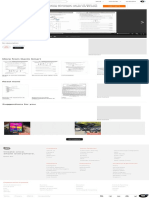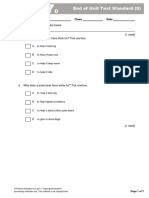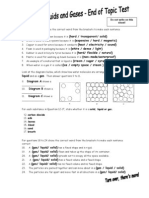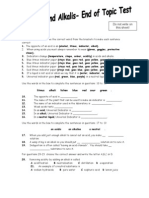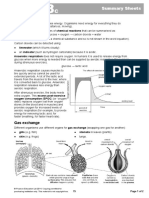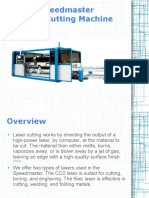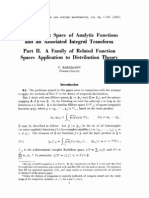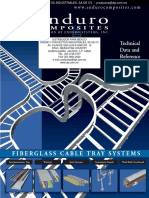End of Unit Test Higher (H) : © Pearson Education LTD 2019. Copying Permitted For
Uploaded by
Mina IskanderCopyright:
Available Formats
End of Unit Test Higher (H) : © Pearson Education LTD 2019. Copying Permitted For
Uploaded by
Mina IskanderOriginal Title
Copyright
Available Formats
Share this document
Did you find this document useful?
Is this content inappropriate?
Copyright:
Available Formats
End of Unit Test Higher (H) : © Pearson Education LTD 2019. Copying Permitted For
Uploaded by
Mina IskanderCopyright:
Available Formats
7F End of Unit Test Higher (H)
Name Class Date
1 A household cleaner contains 10% ammonia and has a pH of 11.
State the hazard symbol that should be on a bottle of this cleaner.
(Total for Question 1 = 1 mark)
2 Litmus indicator is red in an acid and blue in an alkali.
What is the colour of litmus in a neutral solution? Tick one box.
A red
B green
C yellow
D purple
(Total for Question 2 = 1 mark)
3 The word equation for a reaction is:
nitric acid + potassium hydroxide potassium nitrate + water
(a) State the names of the two reactants in the word equation.
(2)
(b) State the name of the salt in the word equation.
(1)
(Total for Question 3 = 3 marks)
4 Hydrochloric acid reacts with calcium oxide to make calcium chloride and water.
Write the word equation for this reaction.
(Total for Question 4 = 2 marks)
© Pearson Education Ltd 2019. Copying permitted for
purchasing institution only. This material is not copyright free. Page 1 of 5
7F End of Unit Test Higher (H)
5 A student investigates the temperature rise when different acids react with sodium hydroxide
solution.
She measures 10 cm3 of sodium hydroxide solution and records the temperature.
She adds 10 cm3 of an acid to the alkali and records the new temperature.
She calculates the temperature rise.
She repeats the experiment with the same volume of sodium hydroxide solution but adds
different types of acid.
Her results are in the table.
Type of acid added to sodium hydroxide solution Temperature rise (°C)
citric acid 3.5
hydrochloric acid 13.6
nitric acid 13.6
vinegar (acetic acid) 6.8
(a) Which variable has been changed in this experiment (the independent variable)?
Tick one box.
A the volume of acid
B the type of acid
C the volume of alkali
D the temperature rise
(1)
(b) Which variable has been measured (the dependent variable)? Tick one box.
A the volume of acid
B the type of acid
C the volume of alkali
D the temperature rise
(1)
© Pearson Education Ltd 2019. Copying permitted for
purchasing institution only. This material is not copyright free. Page 2 of 5
7F End of Unit Test Higher (H)
(c) What is the name of the reaction between an acid and an alkali? Tick one box.
A oxidation
B reduction
C neutralisation
D decomposition
(1)
(d) Plot a bar chart to show the results in the table.
(2)
© Pearson Education Ltd 2019. Copying permitted for
purchasing institution only. This material is not copyright free. Page 3 of 5
7F End of Unit Test Higher (H)
(e) Write a conclusion for this investigation.
(3)
(Total for Question 5 = 8 marks)
6 Acid X is a strong acid and alkali Y is a strong alkali. Their concentrated solutions have pHs at
the two opposite ends of the pH scale.
A student thinks that either acid X or alkali Y have been diluted. He does an experiment to find
out which acid has been diluted.
He puts 5 cm3 of acid X in a boiling tube.
He adds the alkali Y 1 cm3 at a time.
Each time he adds 1 cm3 of the alkali, he measures the pH of the solution.
Volume of alkali added (cm3) pH
Start (no alkali added) 1.0
1 1.0
2 1.0
3 1.0
4 1.5
5 2.0
6 7.0
7 10.0
8 11.0
9 11.5
10 11.5
(a) Suggest how the student could measure the pH of the solution.
(1)
(b) State the volume of alkali Y added to make the solution neutral.
(1)
© Pearson Education Ltd 2019. Copying permitted for
purchasing institution only. This material is not copyright free. Page 4 of 5
7F End of Unit Test Higher (H)
(c) State which solution, acid X or alkali Y, has been diluted. Explain your reasoning.
(2)
(Total for Question 6 = 4 marks)
7 Magnesium sulfate can be prepared from magnesium oxide and an acid.
(a) Write the name of the acid needed to prepare magnesium sulfate.
(1)
(b) Describe an experiment to convert magnesium oxide powder into a solution of magnesium
sulfate.
(2)
(c) Describe how to make sure all of the acid has reacted.
(2)
(Total for Question 7 = 5 marks)
8 Coal-burning power stations produce waste gases that contain sulfuric acid. Describe how the
waste gases are treated to prevent release of sulfuric acid into the air.
(Total for Question 8 = 1 mark)
© Pearson Education Ltd 2019. Copying permitted for
purchasing institution only. This material is not copyright free. Page 5 of 5
You might also like
- 7E Test Standard by Gavin Smart - Issuu 2No ratings yet7E Test Standard by Gavin Smart - Issuu 21 page
- End of Unit Test Standard (S) : A Fertilisation B Flowering92% (12)End of Unit Test Standard (S) : A Fertilisation B Flowering5 pages
- Quick Quiz: On Your Answer Sheet, Write in or Circle The Correct Letter For Each Question0% (1)Quick Quiz: On Your Answer Sheet, Write in or Circle The Correct Letter For Each Question50 pages
- Mark Schem Es: Quick Quiz Matching End of Unit Test Marks To NC Levels100% (1)Mark Schem Es: Quick Quiz Matching End of Unit Test Marks To NC Levels1 page
- Exploring Science Edition © Pearson Education Limited 2008100% (1)Exploring Science Edition © Pearson Education Limited 20082 pages
- 8e End of Unit Test Standard 2016 by Gavin Smart - Issuu0% (1)8e End of Unit Test Standard 2016 by Gavin Smart - Issuu1 page
- Activity # 9: 8-Week Savings Plan SchemeNo ratings yetActivity # 9: 8-Week Savings Plan Scheme3 pages
- Exploring Science 7 AC and AD Answer Sheets100% (2)Exploring Science 7 AC and AD Answer Sheets4 pages
- Year 8 - Food and Digestion and Respiration Mark SchemeNo ratings yetYear 8 - Food and Digestion and Respiration Mark Scheme4 pages
- 7E Quick Quiz: On Your Answer Sheet, Write in or Circle The Correct Letter For Each Question. 7ea100% (3)7E Quick Quiz: On Your Answer Sheet, Write in or Circle The Correct Letter For Each Question. 7ea3 pages
- Chapter 7E End of Unit Tes Answer Key (Mock)100% (1)Chapter 7E End of Unit Tes Answer Key (Mock)3 pages
- 7J - CAT Test Yourself and Answers Unit Test100% (3)7J - CAT Test Yourself and Answers Unit Test6 pages
- Answer Answer 1 11 2 12 3 13 4 14 5 15 6 16 7 17 8 18 9 19 10 20100% (1)Answer Answer 1 11 2 12 3 13 4 14 5 15 6 16 7 17 8 18 9 19 10 204 pages
- 8I Fluids Revision - Worksheet - Answers 660No ratings yet8I Fluids Revision - Worksheet - Answers 6601 page
- Dynamic Balancing: Need A High-Speed Balance? No ProblemNo ratings yetDynamic Balancing: Need A High-Speed Balance? No Problem1 page
- CNC Laser Cutting Machine The Speedmaster PDF0% (1)CNC Laser Cutting Machine The Speedmaster PDF10 pages
- A Tutorial On Creating A Custom SPICE Component For Multisim - Apr 8th 2011No ratings yetA Tutorial On Creating A Custom SPICE Component For Multisim - Apr 8th 20115 pages
- High-Speed Material Design Guide - November 2022No ratings yetHigh-Speed Material Design Guide - November 202219 pages
- CH 1 Understanding Mechatronics 08 - 01 - 24No ratings yetCH 1 Understanding Mechatronics 08 - 01 - 2469 pages
- ISSN (E) : 2222-6737/ISSN (P) : 2305-2147: Asian Economic and Financial Review, 2015, 5 (2) :218-228No ratings yetISSN (E) : 2222-6737/ISSN (P) : 2305-2147: Asian Economic and Financial Review, 2015, 5 (2) :218-22811 pages
- Jewar Airport-OLS and Topographic Surey ReportNo ratings yetJewar Airport-OLS and Topographic Surey Report13 pages
- Mechanics Logo Designing Contest - SampleNo ratings yetMechanics Logo Designing Contest - Sample2 pages
- Bargmann, On A Hilbert Space of Analytic Functions and An Associated Integral TransformNo ratings yetBargmann, On A Hilbert Space of Analytic Functions and An Associated Integral Transform101 pages
- Energy Technology Product List 2 July 2015 PDFNo ratings yetEnergy Technology Product List 2 July 2015 PDF630 pages
- Unipro UniGo Quick Guide 1 EN Run and Analyse Rev 1No ratings yetUnipro UniGo Quick Guide 1 EN Run and Analyse Rev 12 pages
- End of Unit Test Standard (S) : A Fertilisation B FloweringEnd of Unit Test Standard (S) : A Fertilisation B Flowering
- Quick Quiz: On Your Answer Sheet, Write in or Circle The Correct Letter For Each QuestionQuick Quiz: On Your Answer Sheet, Write in or Circle The Correct Letter For Each Question
- Mark Schem Es: Quick Quiz Matching End of Unit Test Marks To NC LevelsMark Schem Es: Quick Quiz Matching End of Unit Test Marks To NC Levels
- Exploring Science Edition © Pearson Education Limited 2008Exploring Science Edition © Pearson Education Limited 2008
- 8e End of Unit Test Standard 2016 by Gavin Smart - Issuu8e End of Unit Test Standard 2016 by Gavin Smart - Issuu
- Year 8 - Food and Digestion and Respiration Mark SchemeYear 8 - Food and Digestion and Respiration Mark Scheme
- 7E Quick Quiz: On Your Answer Sheet, Write in or Circle The Correct Letter For Each Question. 7ea7E Quick Quiz: On Your Answer Sheet, Write in or Circle The Correct Letter For Each Question. 7ea
- Answer Answer 1 11 2 12 3 13 4 14 5 15 6 16 7 17 8 18 9 19 10 20Answer Answer 1 11 2 12 3 13 4 14 5 15 6 16 7 17 8 18 9 19 10 20
- Dynamic Balancing: Need A High-Speed Balance? No ProblemDynamic Balancing: Need A High-Speed Balance? No Problem
- A Tutorial On Creating A Custom SPICE Component For Multisim - Apr 8th 2011A Tutorial On Creating A Custom SPICE Component For Multisim - Apr 8th 2011
- ISSN (E) : 2222-6737/ISSN (P) : 2305-2147: Asian Economic and Financial Review, 2015, 5 (2) :218-228ISSN (E) : 2222-6737/ISSN (P) : 2305-2147: Asian Economic and Financial Review, 2015, 5 (2) :218-228
- Bargmann, On A Hilbert Space of Analytic Functions and An Associated Integral TransformBargmann, On A Hilbert Space of Analytic Functions and An Associated Integral Transform
- Unipro UniGo Quick Guide 1 EN Run and Analyse Rev 1Unipro UniGo Quick Guide 1 EN Run and Analyse Rev 1




